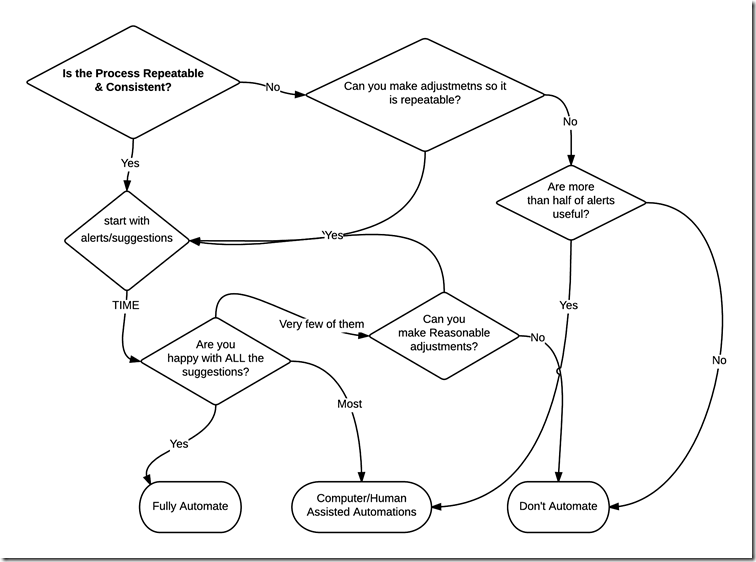We’re big fans of automation; but not everything should be automated.
There are a few considerations with automation:
- Is the process repeatable & consistent?
- With automation; you’re trusting the system to do the exact same thing over and over without any variation. If you don’t trust all the inputs; then you should not automate the process.
- An example of this inside of Adalysis is ‘draft ads’ where you automatically replace losing ads with new ads based upon a set of criteria
- Computer/Human assisted automation is where the computer does a set of computations and gives you suggestions or narrows down a huge list to a list of suggestions. The suggestions are not automatically implemented; they are given to a human to decide what to do.
- An example of this in Adalysis is the ad test results. You’re asking a system to crunch through a huge amount of data and only show you the ad groups where you have test results where you can take action.
- Alerts are useful if most of them are useful.
- For instance, there was a huge credit card breach at a retailer a few years ago; but it was not acted upon quickly as the experts said that alert often generates hundreds of low priority false alerts daily.
- If you get so many alerts that you are just deleting them; you’re causing yourself more work than is useful.
- In the graphic; we say 50%; but that’s a rough guideline. If there’s going to be a lot of alerts than 75% of 90% being useful is a better number.
- An example of an alert in Adalysis is when you have 0 ads in an ad group or you aren’t testing certain ad groups. These alerts are always useful.
Here’s our flowchart for determining automation:

This flowchart was tweeted as I was speaking at SMX and gathered a lot of interest; so I thought we’d show the entire presentation.